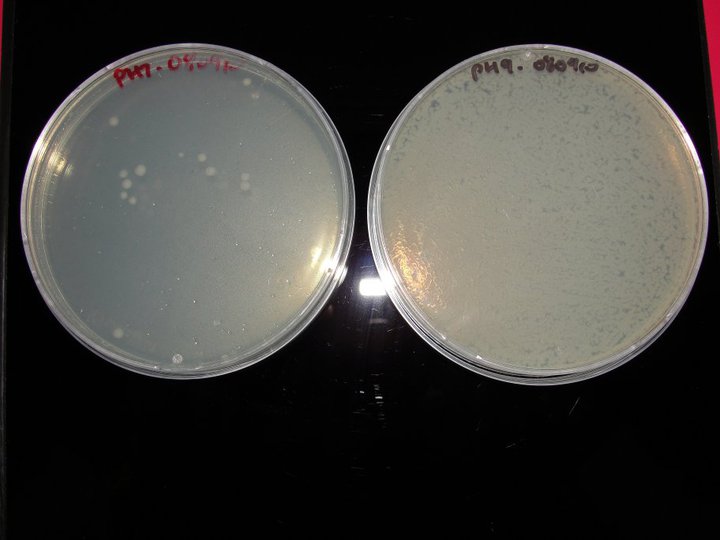Team:Newcastle/Alkalinity resistance
From 2010.igem.org

| |||||||||||||
| |||||||||||||
Alkalinity resistance
Our chassis, Bacillus subtilis 168, can be acclimatised to the high pH of concrete (which can be as high as pH 10). Below on the left you can see Bacillus subtilis 168 which was grown under normal conditions (pH 7) and then transferred to pH 10. On the right is Bacillus subtilis 168 which has been acclimatised to high pH (by growing at increasing pH levels from 7 to 9) before being transferred to pH 10, and has a much higher rate of survival.
Results:(see below) We acclimatised the chassis to high pH by gradually making Bacillus subtilis 168 grow at a gradient of increasing pH from 7.0 to 9.0. When the cells are grown in a gradient of increasing pH, their survival rates at high pH like 10.0 which is found in the concrete, increases by a large factor. Here in the picture,the cells raised at pH 7 when transferred on to the plate having agar at pH 10(left)did not survive as well as cells raised at pH 9 (right).
 
|
 "
"
